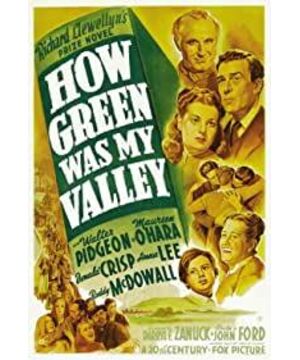This black-and-white film from the 1940s has a strong background. It describes the fate of ordinary people, especially the miners, strikes, mine disasters, child labor, exploiting capitalists, life and death, but in any case, the family is still on the same road, full of hope. Facing tomorrow. The film focuses more on the growth of the young male protagonist, whether it is being physically punished by a teacher, bullied by his classmates, or his family expects his ideal to be a lawyer or a doctor, but he chooses to go to the mine and follow the family tradition. The status of workers in the United States at that time may have begun to decline. People are more inclined to work in big cities, especially office work.
Just like the reform of state-owned enterprises in the 1990s and China after the lay-off tide, the status of workers has fallen to the bottom of the era. A similar movie "August" also describes this lost generation, a generation abandoned, but "August" lacks the little boy's. Growing up, and too depressing, can't see hope and the future. Classic or not, perhaps this is the watershed.
Of course, the concept of an industrial film comes from the Soviet Union. As far as Hollywood is concerned, this is a feature film.
The sharp sirens on the mine are really like air-raid sirens. Every time it sounds, the people in the town are worried.
View more about How Green Was My Valley reviews











